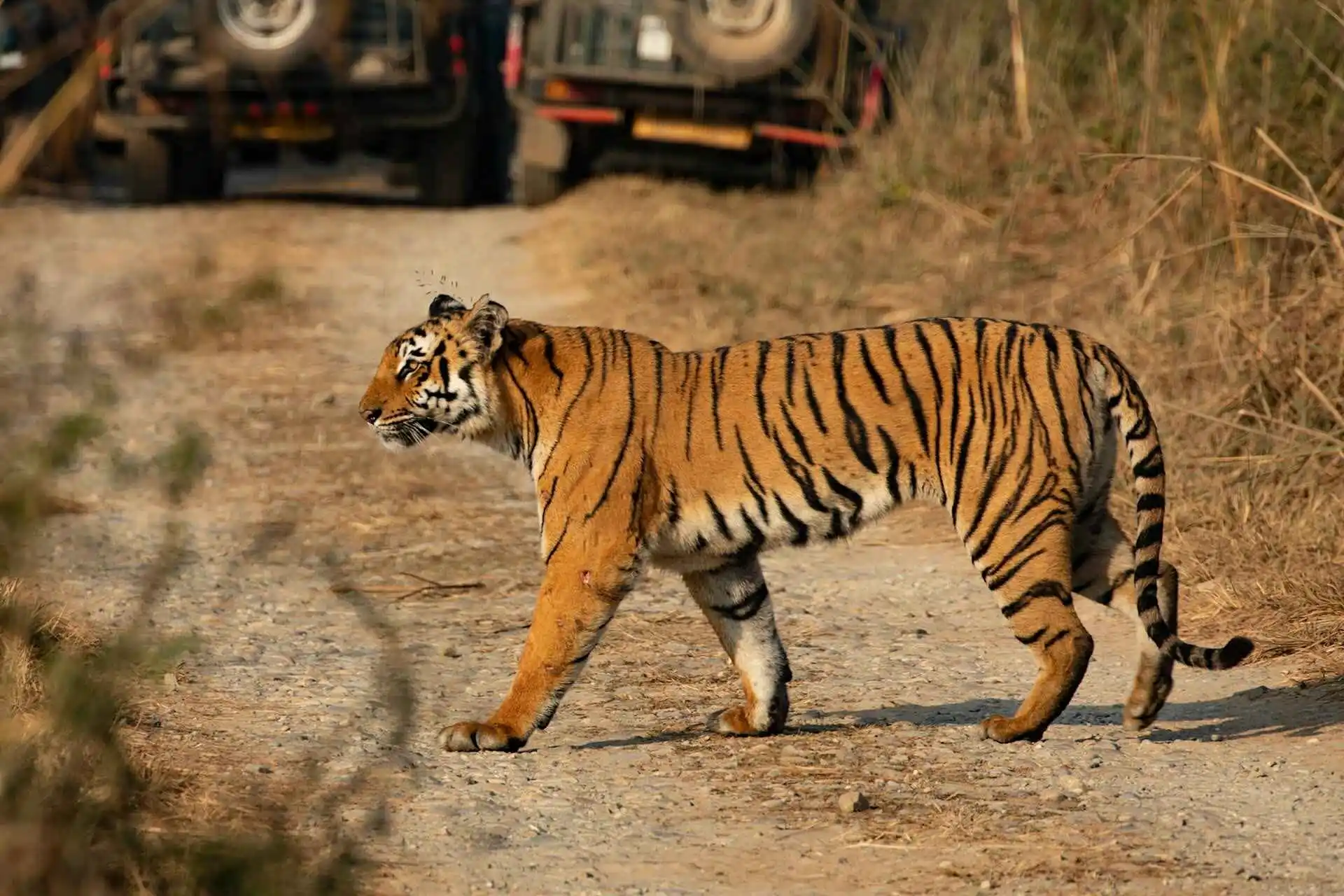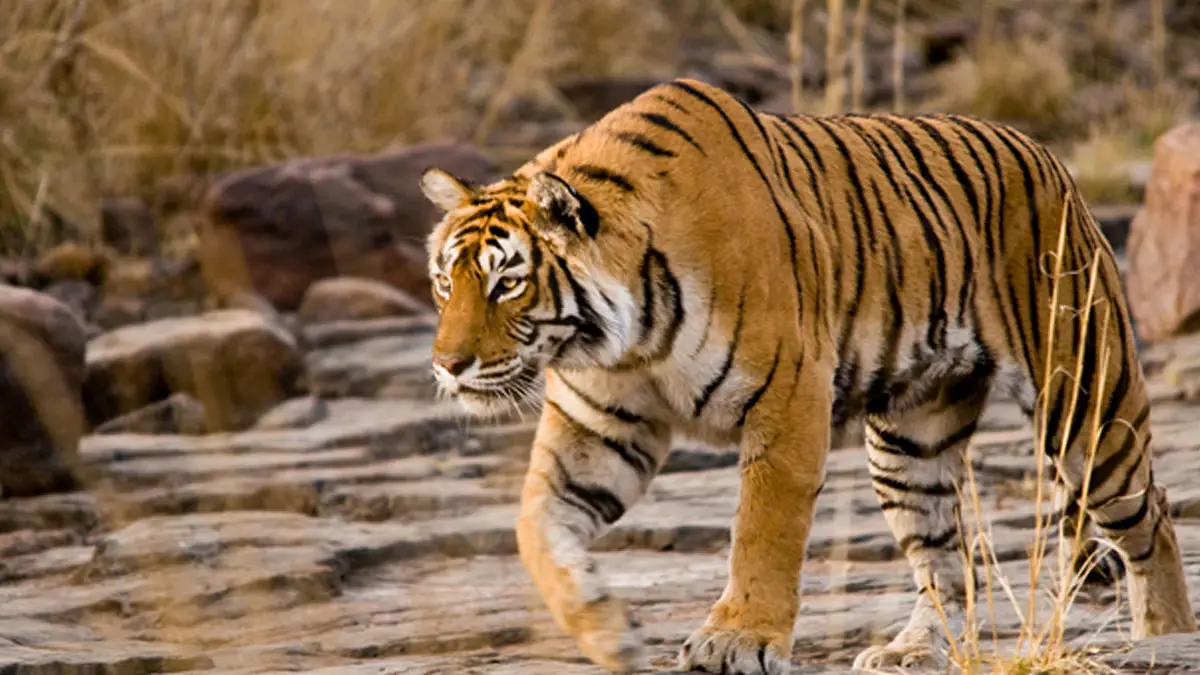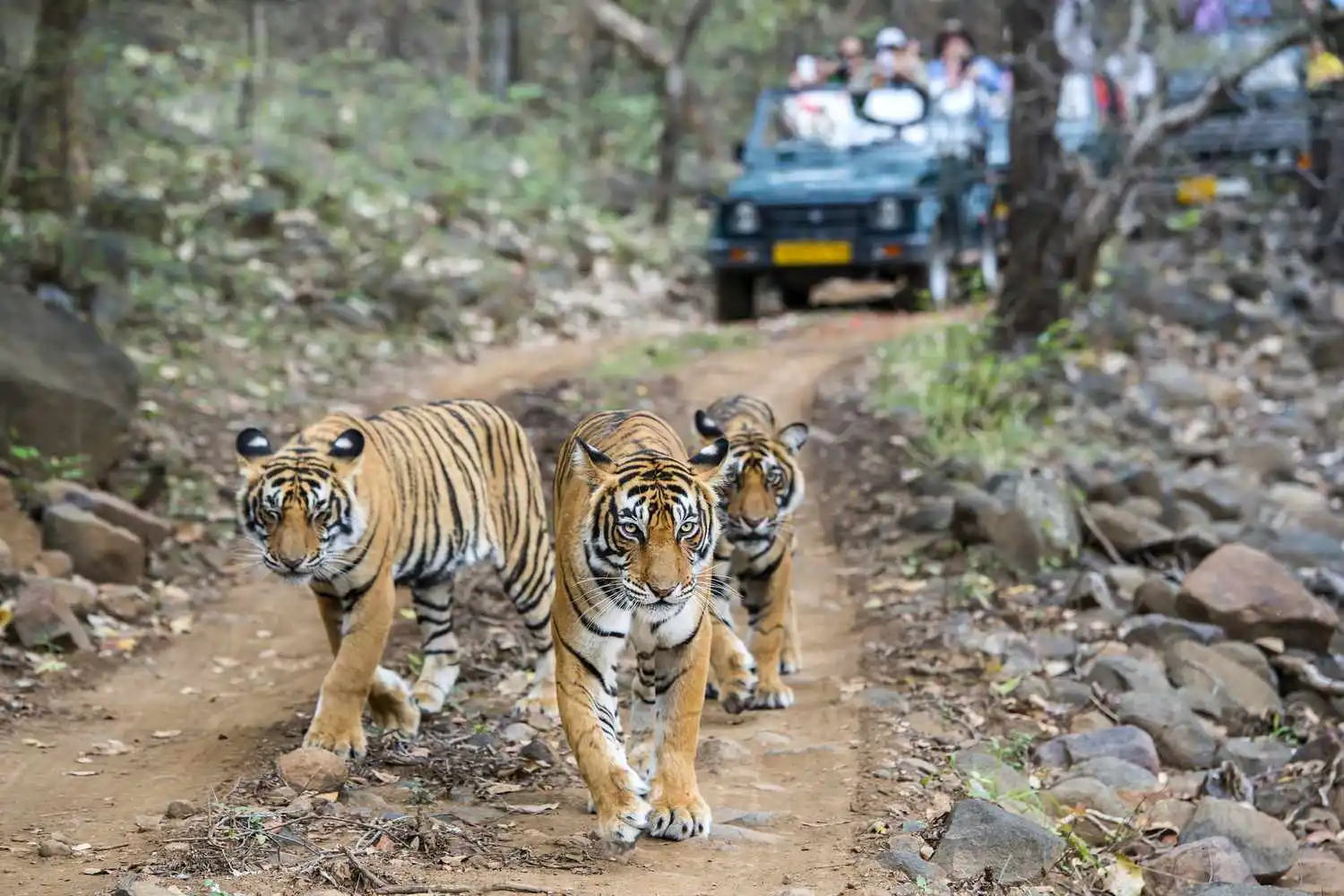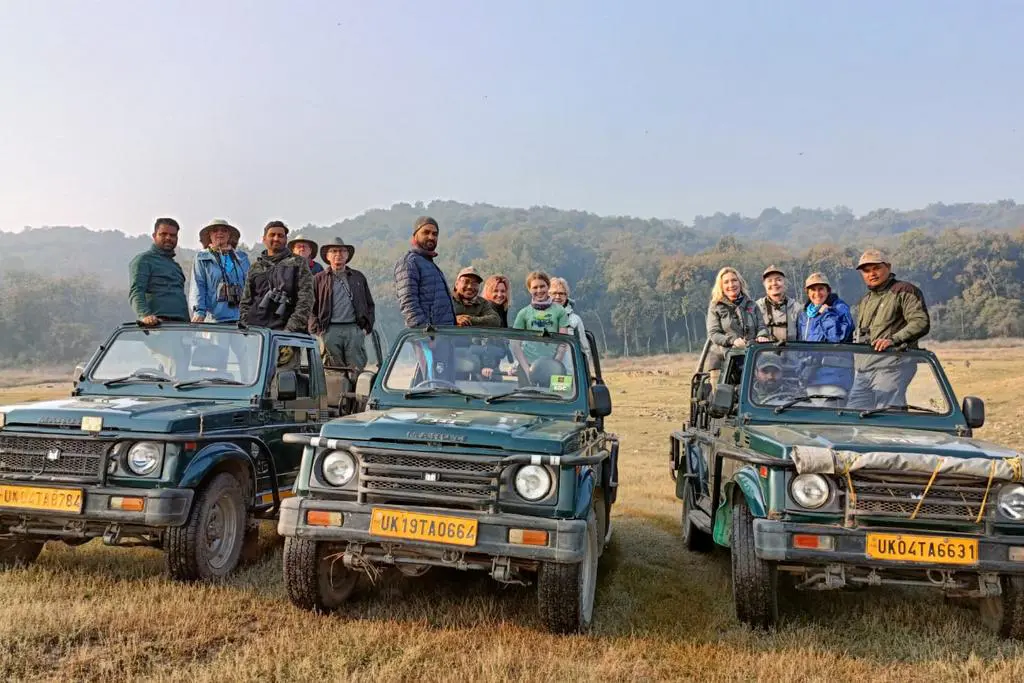India, with its vast and diverse geographical landscape, is home to some of the most magnificent wildlife, including the Royal Bengal Tiger. Among the numerous wildlife sanctuaries, Jim Corbett National Park and Ranthambore National Park stand out as two premier destinations for tiger safaris. As India has achieved almost one-fourth of its geographical area as forest cover, it offers incredible wildlife safari experiences. For enthusiasts planning a visit to these parks, here are seven important things you should know before embarking on a safari at these famous wildlife destinations.
-
Booking Your Tiger Safari Permits

A valid permit is essential to enter both Corbett and Ranthambore National Parks. Safari permits are available through the state forest department, and booking can be done either online or at offline counters. Both parks have limited slots for safari vehicles, so securing your permit in advance is crucial.
– Ranthambore National Park: Safari bookings are available for regular morning and afternoon shifts, and special safaris can be arranged for a full day (6 AM to 6 PM) or half-day (6 AM to 12:30 PM). The booking opens 365 days in advance.
– Corbett National Park: Similar to Ranthambore, Corbett’s tiger safari permits are available 1.5 to 2 months in advance. Certain zones, such as Dhela, Jhirna, Garjiya, and Phato, remain open year-round, even during the monsoon season.
-
Types of Safaris Available

Both Corbett and Ranthambore offer unique safari experiences. While walking safaris are prohibited, you can explore the parks via Gypsies, jeeps, or canters provided by the forest department.
– Ranthambore National Park: The safaris can be conducted in an open jeep or canter. Full-day and half-day safaris are available, allowing you to explore more of the park’s vast terrain.
– Corbett National Park: Safari options are similar to Ranthambore, but Corbett does not offer full-day or half-day safari options. You will need to book specific safari shifts, which typically last for about 3.5 hours.
-
Understanding the Zones for Safari
 Both parks are divided into distinct zones, each offering different wildlife viewing experiences. It’s important to know the difference between core zones (dedicated to conservation) and buffer zones (where eco-tourism activities are allowed).
Both parks are divided into distinct zones, each offering different wildlife viewing experiences. It’s important to know the difference between core zones (dedicated to conservation) and buffer zones (where eco-tourism activities are allowed).
– Ranthambore National Park: The park has 10 numbered zones, with Zones 1 to 5 located near each other and Zones 6 to 10 situated further out. Each zone offers a unique chance to view wildlife, with a specific number of vehicles allowed per shift.
– Corbett National Park: The park is divided into seven zones, with distinct entry and exit points. These zones are scattered across the park’s terrain, ensuring varied wildlife sightings depending on the area you visit.
-
Flora and Fauna of Corbett & Ranthambore
Both parks are rich in flora and fauna, offering a spectacular view of nature’s diversity.
– Ranthambore National Park: Located between the Aravalli and Vindhya hills, the park features dry deciduous forests, with prominent species such as Dhok, Salai, and Banyan trees. You can expect to see 40 species of mammals, 35 reptiles, and 320 bird species.
– Corbett National Park: Situated in the foothills of the Himalayas, Corbett offers varied vegetation types, including Sal, Chir, and Bamboo. The park is home to over 50 species of mammals, 580 species of birds, and 25 species of reptiles.
-
Rules and Restrictions for Safari

Safaris in both parks are subject to several regulations, with strict rules regarding vehicle movements, entry and exit gates, and allotted safari tracks.
– Ranthambore National Park: Vehicles are assigned to specific zones and are not allowed to stray outside these areas. Safari times are based on sunrise and sunset, typically lasting 3.5 hours.
– Corbett National Park: Similar to Ranthambore, the safari vehicles in Corbett are restricted to designated routes within the allotted zone. A jeep safari within the Dhikala zone can only be done if you’re staying at the forest rest houses within the zone.
-
Must-Visit Spots in the Parks

Both parks offer spectacular locations that are must-visits during your safari.
– Ranthambore National Park: Key spots include Zone 1 (Tuti ka Nalla, Peela Pani), Zone 2 (Jogi Mahal, Nal Ghati), Zone 3 (Raj Bagh, Padam Talab), and Zone 6 (Kala Pani, Saran Ka Pattha).
– Corbett National Park: Notable spots include Sambhar Road, Ramnagar Reservoir, Sherbohi, and Nadi Paar within the Dhikala zone, providing excellent opportunities for tiger sightings and birdwatching.
-
Tiger Density
Tiger density refers to the number of tigers per 100 square kilometers and is a good indicator of the park’s tiger population.
– Ranthambore National Park: According to the 2018-19 Tiger Census, the tiger density is 9.6 tigers per 100 square kilometers.
– Corbett National Park: Corbett boasts the highest tiger density among India’s tiger reserves, with 14 tigers per 100 square kilometers, making it an ideal destination for tiger enthusiasts.
Both Ranthambore and Corbett National Parks offer incredible safari experiences, with abundant wildlife and breathtaking landscapes. Whether you’re a seasoned wildlife explorer or a first-time visitor, understanding these essential points will help you make the most of your safari adventure with Oyepedia Travel LLP.

